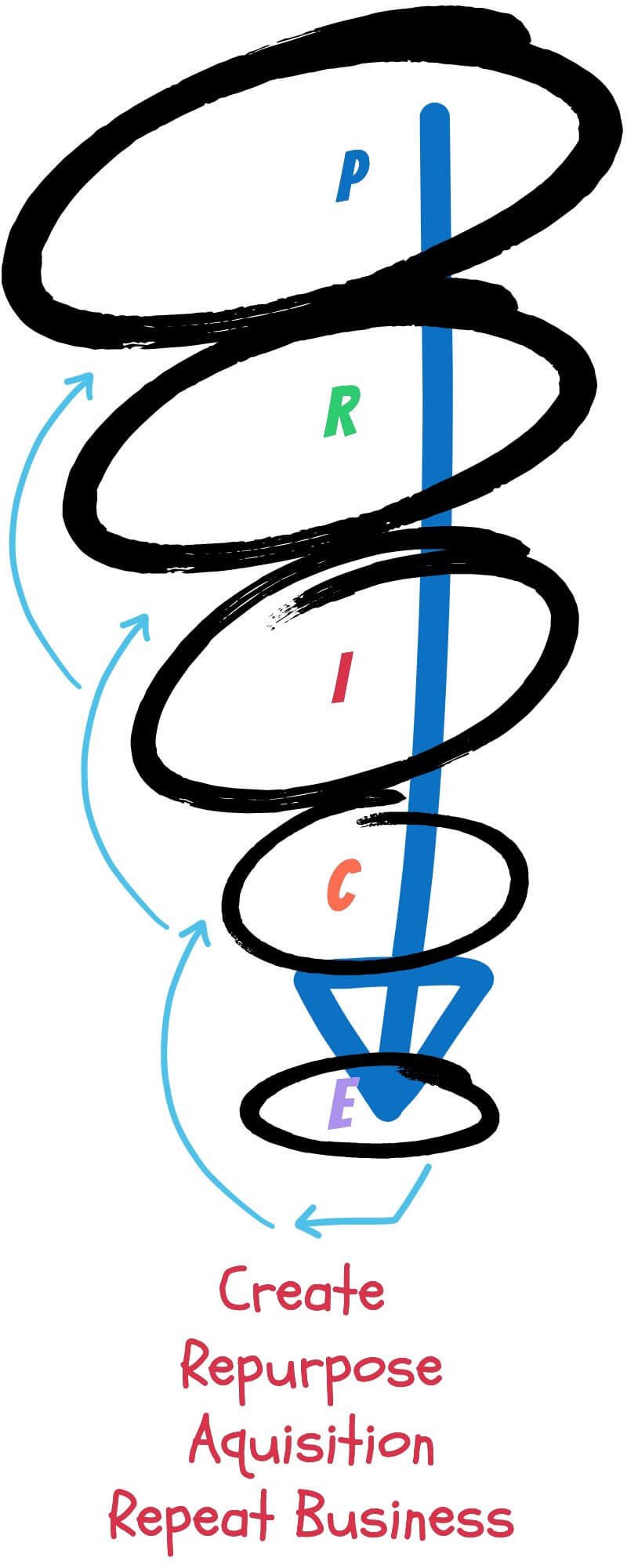I decided to write an informative series highlighting what an inbound marketing funnel is and the details of the 5 cones within each funnel. This will keep this article from getting too bloated. Each cone will cover part of the 4 buyer stages and account for the strategies and analytics that are important in each level of the cone. So if you are doing your own inbound marketing funnel, this series should be perfect and walk you through it, step-by-step.
Inbound Marketing Funnel
The purpose of an inbound marketing funnel is to meet all the different levels of the buying phase. In this series, there will be 4 buying phases and a planning phase, all 5 cones within the funnel.
Like a literal funnel, leads are attracted in and poured through the cones as the phases of their buying decisions are met. With all funnels, there’s a bottleneck where the bulk of the liquid is slowed to ensure accuracy in the pour. With your inbound funnel, the bottlenecks will be from drop-offs in the leads-to-buyers figures. We don’t close 100% of our leads so as a normal part of the sales process, you lose some people as you go down the funnel.
What Does It Look Like?
Each cone in the funnel represents an action plan tailored to a particular phase in the buying cycle. This means each cone has actions, goals, and analytics you’ll need to address.
The acronym I’ve come up with is PRICE because surely, you’ll be able to remember it.
- Plan
- Reach
- Implement
- Convert
- Engage
Each one of these cones will be broken down in their own respective article, or this bad boy would be too long and too boring. So, hopefully, bite-sized pieces of the funnel will help you understand it better so you can be on your way to rocking your own inbound marketing funnel.
